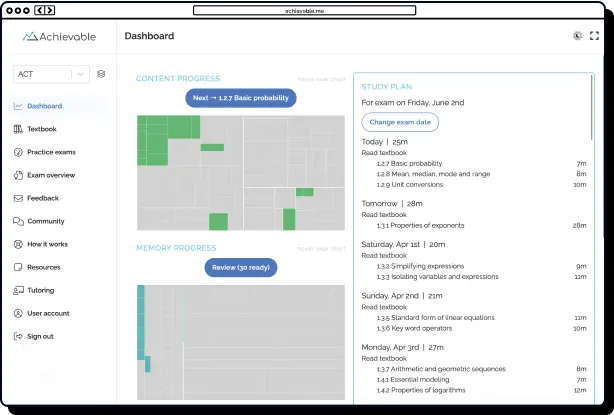
USMLE dermatology: Making concepts stick




Table of contents
- Avoid classic pitfalls with structured approaches and memory tools
- Elevate your skin lesion descriptions and minimize diagnostic mistakes
- Rapid recall under pressure: Use "ABCDE" for melanoma diagnosis
- Master subtle dermatology clues: Distinguish lichen planus from psoriasis - and more
- Fine-tune your dermatology skills: Distinguish primary lesions and catch early signs tested on the USMLE
- Build diagnostic confidence: Use annotated images and detailed vignettes
- Conclusion
This article is the 6th and final part in our USMLE dermatology series, where we provide you with all the information you need to study for and ace dermatology-related questions and vignettes on your medical residency exams. In our closing post, we leave you with expert study tips to effectively master all the content covered in previous sections.

Avoid classic pitfalls with structured approaches and memory tools
Elevate your skin lesion descriptions and minimize diagnostic mistakes
As a USMLE examinee, your ability to describe dermatologic findings with clarity and precision is directly tested. Examiners expect you to distinguish between lesion types and recognize subtle differences that drive differential diagnosis. Adopting a structured approach not only prevents errors but also maximizes your scoring potential on vignette-based questions.
Stepwise approach to skin lesion assessment:
- Identify primary morphology (apply size cutoffs)Start by determining if a lesion is flat (macule/patch) or raised (papule/plaque), and whether it's fluid-filled (vesicle/bulla). Always apply the 10 mm cutoff for clarity:
- Macule: flat, <10 mm
- Papule: raised, <10 mm
- Plaque: raised, >10 mm
- Vesicle: fluid-filled, <10 mm
- Bulla: fluid-filled, >10 mm
Missing these distinctions, for example, calling a psoriasis plaque a papule, is a common pitfall on board exams. Refer to Merck Manuals and Medbullets for reliable terminology.
1. Analyze shape and configurationRecognize patterns such as annular (ring-shaped), targetoid (bullseye), or linear: Annular suggests tinea; targetoid may indicate erythema multiforme. Distinguishing between linear dermatitis and grouped herpes zoster vesicles is frequently tested.
2. Assess distributionAlways note whether a rash is dermatomal (herpes zoster), symmetrical (autoimmune), or photodistributed (sun-exposed areas). These patterns are high-yield on the USMLE for narrowing differentials, such as distinguishing shingles from contact dermatitis. See Stanford Medicine 25 Dermatology Visual Guides for visual examples.
3. Use specific color termsReplace vague descriptors with precise terms: "erythematous" (red), "violaceous" (purple), "hyperpigmented" (dark brown/black). According to Medbullets, correct color terminology reduces diagnostic errors, especially for melanoma.
4. Describe surface changes and secondary findingsNote features such as verrucous (wart-like), lichenified (thickened), crusted, or eroded. Mentioning induration (firmness) or fluctuation (fluid movement) completes your systematic description, just as examiners expect.
Avoid the term "maculopapular rash" - it's imprecise and discouraged in both clinical and exam settings. See Merck Manual for details on preferred nomenclature.
Bottom line:A stepwise, checklist-driven approach is proven to reduce classification errors and sharpen your differential - directly translating to higher USMLE scores and stronger clinical decision-making.
Rapid recall under pressure: Use "ABCDE" for melanoma diagnosis
Time management is essential during the USMLE. The 'ABCDE' mnemonic is a must-know, board-tested tool for rapid melanoma recognition:
ABCDE:
- Asymmetry: uneven halves
- Border irregularity: scalloped/uneven edges
- Color variation: multiple shades in one lesion
- Diameter: >6 mm is concerning, but evolving lesions of any size require attention
- Evolution: any change in size, shape, color, or symptoms (American Academy of Dermatology)
Mnemonics like ABCDE are valuable for retention and exam performance (Picmonic Study). Focus on the single most significant clue among distractors, as often highlighted in exam vignettes (Knowmedge Guide).
Be aware: benign lesions can sometimes exhibit ABCDE features (DermNet NZ), so interpret the mnemonic in context. Note that 'E' now stands for 'Evolution' (change) rather than 'Elevation'.
For psoriasis, remember that the PASI score (Healthline) is the validated tool - not unproven mnemonics.
On test day, use ABCDE as your actionable checklist for identifying melanoma with confidence.

Master subtle dermatology clues: Distinguish lichen planus from psoriasis - and more
USMLE questions often hinge on your ability to differentiate between similar-appearing rashes. Recognize these high-yield distinctions between lichen planus and psoriasis:
- Lesion appearance:
- Lichen planus: flat-topped, polygonal, violaceous papules with Wickham's striae (fine white lines).
- Psoriasis: well-demarcated erythematous plaques with silvery scale.
- Pruritus (itching):
- More pronounced in lichen planus (55.2%) than psoriasis (14.9%) (Medical Journals).
- Distribution:
- Lichen planus: flexor surfaces, oral mucosa (white, lacy streaks).
- Psoriasis: extensor surfaces, scalp (scalp involvement: 33.8% in psoriasis vs. 3.4% in lichen planus), and nails (WebMD).
- Dermoscopy:
- Lichen planus: violaceous background, Wickham's striae.
- Psoriasis: red dots (dotted vessels), yellow-white scales (NCBI).
- Histopathology:
- Lichen planus: band-like lymphocytic infiltrate at the dermal-epidermal junction, "sawtooth" appearance (Medbullets).
- Psoriasis: acanthosis, parakeratosis, Munro microabscesses (NCBI).
Clinical note: Lichen planus typically resolves in 1-2 years; psoriasis is usually chronic and relapsing.
On the USMLE, attention to these defining features can be the difference between a correct and incorrect answer. Integrate these distinctions into your study routines and practice questions to reinforce your diagnostic reasoning.
Fine-tune your dermatology skills: Distinguish primary lesions and catch early signs tested on the USMLE
Excelling in dermatology on the USMLE requires more than rote memorization - you must recognize key nuances. Common exam pitfalls include confusing primary lesions and missing prodromal symptoms.
- Macule vs. papule: palpation is key
- Macule: flat, non-palpable, <10 mm (e.g., freckles).
- Papule: raised, palpable, <10 mm (e.g., warts, nevi).
- Always apply the 10 mm cutoff: larger raised = plaques; larger flat = patches.
"Maculopapular" is discouraged - always use precise, exam-accepted terms (Merck Manuals).
- Recognize prodromal signs
Prodromal clues often precede classic findings and are popular on USMLE vignettes (Wikipedia). Train yourself to recognize these early signs for an edge on exam day.
Build diagnostic confidence: Use annotated images and detailed vignettes
High-performing USMLE candidates excel by rapidly analyzing dermatology images and aligning them with clinical vignettes, even across a range of skin tones. Because most study resources lack diversity (over 70% feature light skin; only 13% show dark skin PMC), proactively supplement your study with varied examples.
Create your own image library or flashcards, including:
- Key diseases on multiple skin tones (e.g., erythema: gray-purple on dark skin, pink-red on light skin; vitiligo: more prominent on dark skin).
- Side-by-side comparisons with standard descriptors (Stanford Medicine 25).
- Annotated vignettes pairing images with clinical context, such as age, history, and concise lesion description - mirroring exam formats.
For instance, psoriasis on brown skin may appear as "salmon-colored plaques with micaceous scale"; on light skin, "bright red plaques with silvery scale." Practicing with these distinctions will hone your pattern recognition under test conditions.
Use diagrams and flashcards for both identification and recall (Listening.com). Mastering detailed language and diverse image analysis, as recommended by Stanford Medicine 25, will set you apart as a top-scoring USMLE candidate.

Conclusion
As a USMLE candidate, mastering advanced dermatology provides you with a significant edge, enabling you to excel in both clinical reasoning and visual diagnosis, as well as linking dermatologic findings to systemic disease. Focusing your preparation on high-yield conditions like Stevens-Johnson syndrome, pemphigus vulgaris, and melanoma, while integrating patient-specific clinical reasoning, will help you rise above rote memorization. Regular practice with clinical scenarios mirrors the exam experience and sharpens your diagnostic skills.
Stay updated with the latest USMLE guidelines and organize your study schedule around official content blueprints. Prioritize reviewing multi-system dermatology vignettes, and utilize practical tools such as morphology charts and disease tables to quickly and accurately distinguish key diagnoses on test day.
Take the next step by setting aside dedicated dermatology review sessions, working through case-based questions, and monitoring your improvement with reputable USMLE resources. Your ability to synthesize and apply advanced dermatologic knowledge will distinguish you as a top performer.
By committing to advanced dermatology mastery, you not only strengthen your USMLE preparation but also lay a foundation for clinical excellence - equipping you to confidently approach a wide range of dermatologic presentations in your future medical career.
Click here to return to part 1 of our 6-part blog series on dermatological topics covered on the USMLE. Best of luck on your exams!

